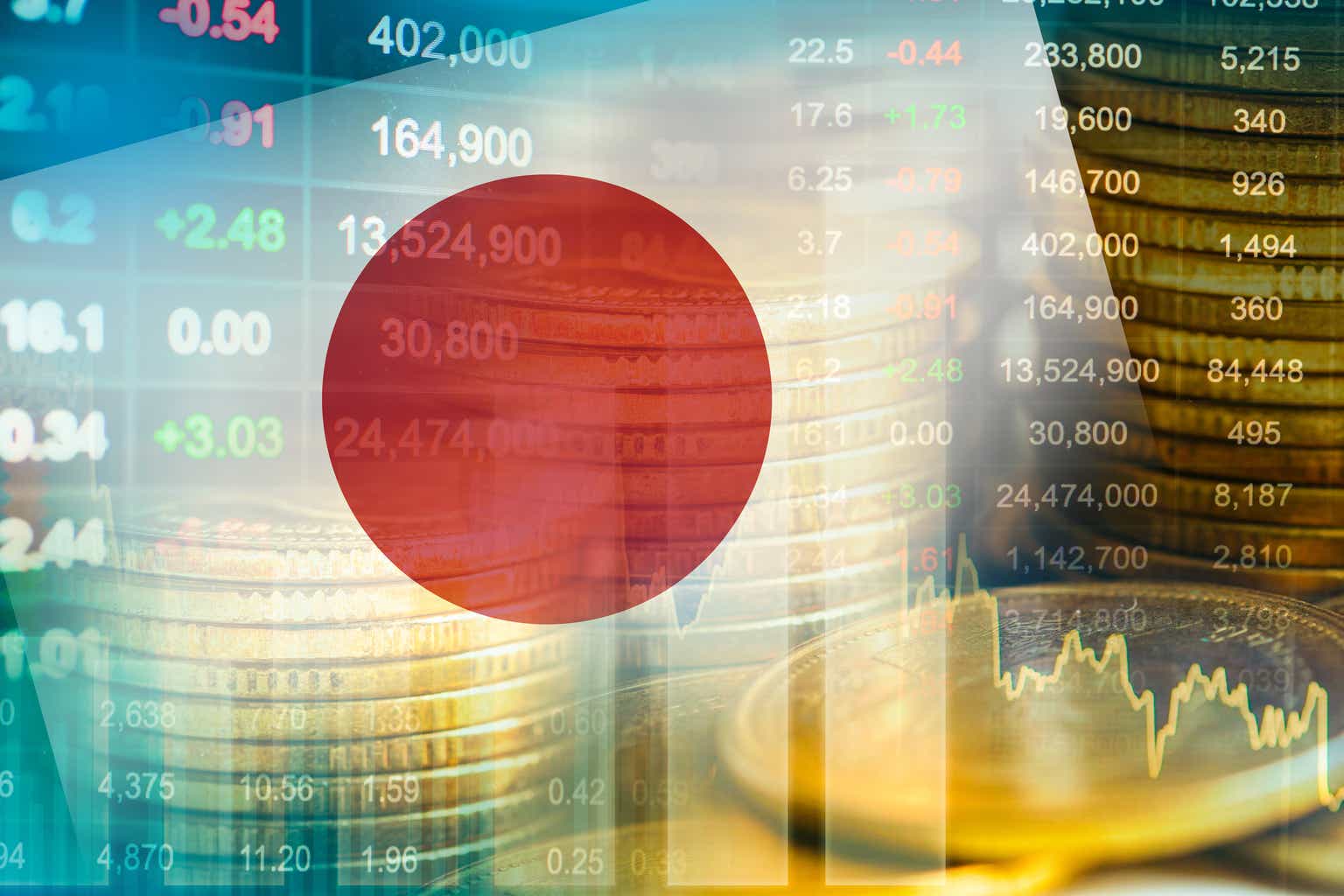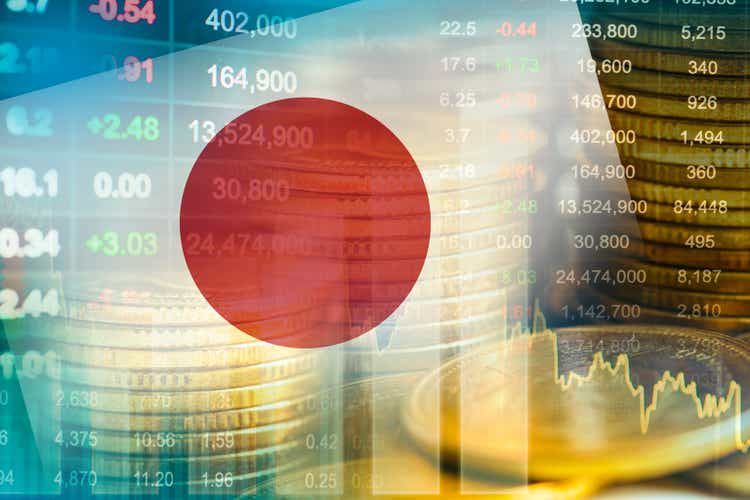There may be more room for Japanese stock rally

Manasanant’s mother
It feels like the late 1980s again. Not because I wear Reebok high-top sneakers, Guess jeans, and an Esprit jacket, or because I listen to Men at Work and Yes, but because there is a lot of interest in the Japanese economy and Japanese stocks. We have experienced a strong rally over the past year.One
Is this a temporary trend or a “Japanese iconoclast” in the making?
Japan’s economy and stock market have clearly benefited from the strong fiscal and monetary stimulus it received during the pandemic. However, from my perspective, the foundation was laid many years ago through ‘Abenomics’, an ambitious economic plan introduced by the late Prime Minister Shinzo Abe over 10 years ago.
The ‘Three Arrows’ of Abenomics
Abenomics was designed to lift Japan’s economy out of decades of stagnation. The plan included three core initiatives known as the Three Arrows.
- fiscal stimulus
- very loose monetary policy
- Structural reforms to improve economic competitiveness and growth.
This will be a powerful combination that will enable Japan’s economy to emerge from deflation through monetary and fiscal stimulus, and structural reforms to improve confidence and make economic growth sustainable over the long term.
- first arrowThe fiscal stimulus was simply government spending that began in 2013. This included a large infrastructure spending plan, soon followed by further fiscal stimulus.
- second arrowThe ultra-loose monetary policy included not only ultra-low interest rates but also large-scale asset purchases. In the case of Japan, large-scale asset purchases involve not only quantitative easing, such as the Bank of Japan’s purchase of Japanese government bonds, but also qualitative easing, such as the Bank of Japan’s purchase of risky assets such as Japanese exchange-traded funds. One of the aims of the arrow was to encourage older Japanese people to invest their assets instead of keeping them in bank deposits. Another purpose of this arrow was to weaken the yen and support export growth.
- third arrowStructural economic reforms consisted of a piecemeal series of policies aimed at increasing the size of the workforce, deregulating businesses, and generally increasing the competitiveness of the Japanese economy. This included corporate governance reforms launched in 2014 to improve capital efficiency among companies. This included policies to encourage more women to return to work and encourage companies to raise wages for their employees.
How Abe’s vision affects Japan today
Fast forward to today. With structural reform appearing to be in full swing, I think it is fair to say that Japan is realizing much of Prime Minister Abe’s vision. Japan’s Shunto wage negotiations produced better results than expected. Rengo, Japan’s largest labor union, and companies agreed to a wage increase of 5.28%. This is much higher than last year’s wage increase of 3.8% and much higher than the 4.1% increase expected by economists in a recent Bloomberg poll.2
Corporate governance reforms that began a decade ago have improved capital efficiency for companies listed on the Tokyo Stock Exchange, and the TSE is pushing for further progress. Moreover, Japan continues to support two of Prime Minister Abe’s three arrows. Additional significant fiscal stimulus has been implemented under current Prime Minister Fumio Kishida, and he continues to support structural reforms. Kishida recently eased regulations and streamlined business practices to encourage domestic and foreign investment, allowing foreign investors to fill out government applications in English.
Three reasons why Japanese stocks could rise further
Some would argue that the strong Japanese stock market rally over the past year has been responsible for any improvement in the Japanese economy. But I would argue that there are additional reasons that could push Japanese stocks higher going forward.
- Attractive valuation. First, despite their strong gains over the past year, Japanese stocks still look attractive. The MSCI Japan index’s valuation remains low with a trailing price-to-earnings (P/E) ratio of 16.35 compared to other major indices such as the S&P 500 index (22.93).three Additionally, the dividend yield of the MSCI Japan index is 1.99%, which is much higher than the 1.4% dividend yield of other major indices such as the S&P 500 index.three
- Cash on the side. Second, there is quite a bit of cash on the side in Japan. In Japan, cash deposits account for a whopping 52.5% of household financial assets, compared to just 12.5% in the United States and 35.5% in the Eurozone. Not surprisingly, households in the US and the Eurozone are more heavily weighted toward stocks.4 The catalyst for moving cash into stocks could be the new Nippon Individual Savings Account (NISA), a tax-free investment savings plan launched in January to encourage Japanese households to move money from bank deposits into stocks.
- Normalization of monetary policy. Finally, a decision by the Bank of Japan to gradually normalize monetary policy could also be positive. This normalization can boost confidence. Raising interest rates for the first time in 17 years would send a strong message that Japan’s economy is in better shape and expected to continue improving, so it no longer needs such high levels of support. Additionally, the normalization of monetary policy is likely to strengthen the Japanese yen, which could be positive for Japanese stocks. That could cheer foreign investors who have been frustrated by the yen’s decline, which has negated much of Japanese stock returns for foreign investors last year.
Last December, my colleague Daiji Ozawa, Chief Investment Officer and Head of Japanese Equities, correctly predicted that the Nikkei 225 would surpass its previous peak in 1989. He said Japanese stock markets are expected to continue to perform well if nominal gross domestic product (GDP) growth continues, supported by the Bank of Japan, and if prudent monetary policy normalization and government reforms are implemented to strengthen the entire investment chain. I couldn’t agree more with this assessment and look forward to further positive developments for the Japanese economy and stock market. .
View Date
This week, all eyes will be on central banks, particularly the Bank of Japan, the Bank of England, and the US Federal Reserve. They are all closer to changing their respective monetary policies, although the Bank of Japan is expected to move first and begin normalizing monetary policy this week or in April. The Suunto deal is likely to improve Bank of Japan’s confidence in a faster normalization. Rather than later.
We’re also likely to get valuable guidance this week on when the Federal Reserve and Bank of England will start cutting interest rates after recent surprising data points. I will be particularly interested to see the Fed’s dotplot, given whispers that only two rate cuts are expected from the Fed this year. If so, don’t worry. As I said before, dotplots can be very inaccurate. If you want to relax, take a look at the dot plot for December 2021.
|
date |
event |
what it tells us |
|
3/18 |
Eurozone Consumer Price Index |
Track the path of inflation. |
|
U.S. NAHB Housing Market Index |
It indicates the health of the housing market. |
|
|
Bank of Japan decision |
We disclose our latest decision on the interest rate path. |
|
|
Reserve Bank of Australia decision |
We disclose our latest decision on the interest rate path. |
|
|
3/19 |
German ZEW economic sentiment |
It measures opinions about the direction of the economy over the next six months. |
|
Eurozone ZEW economic sentiment |
It measures opinions about the direction of the economy over the next six months. |
|
|
U.S. Building Permits and Housing Starts |
It indicates the health of the housing market. |
|
|
Canadian Consumer Price Index |
Track the path of inflation. |
|
|
3/20 |
UK Consumer Price Index |
Track the path of inflation. |
|
German Producer Price Index |
Measures changes in prices paid to producers of goods and services. |
|
|
U.S. Federal Open Market Committee meeting |
We disclose our latest decision on the interest rate path. |
|
|
3/21 |
Swiss National Bank decision |
We disclose our latest decision on the interest rate path. |
|
Bank of England decision |
We disclose recent decisions on interest rate paths. |
|
|
UK Purchasing Managers’ Index |
It indicates the economic health of the manufacturing and service sectors. |
|
|
Eurozone Purchasing Managers’ Index |
It indicates the economic health of the manufacturing and service sectors. |
|
|
U.S. Purchasing Managers’ Index (S&P Global) |
It indicates the economic health of the manufacturing and service sectors. |
|
|
Japan Consumer Price Index |
Track the path of inflation. |
|
|
uk retail sales |
Measure consumer demand. |
|
|
canada retail sales |
Measure consumer demand. |
With contributions from Daiji Ozawa and Tomo Kinoshita
footnote
One Source: MSCI as of December 31, 2023. In 2023, the MSCI Japan index recorded a return of 20.77%.
2 Source: Bloomberg poll, March 12, 2024
three Source: MSCI, as of February 29, 2024; Bloomberg, as of March 15, 2024.
4 Source: Nikkei Asia, “Japanese households’ investments drive 80% of wealth growth”, December 26, 2023
important information
NA3454870
All investments involve risk, including the risk of loss.
Past performance does not guarantee future results.
You cannot invest directly in indices.
This is not a recommendation of any investment strategy or product for any specific investor. Investors should consult a financial professional before making any investment decisions.
Stock values typically fluctuate, sometimes significantly, depending on the company’s specific activities as well as general market, economic, and political conditions.
Risks of investing in securities of foreign issuers, including emerging market issuers, may include foreign currency fluctuations, political and economic instability, and foreign taxation issues.
The S&P 500® Index is an unmanaged index representing the U.S. stock market.
The MSCI Japan Index measures the performance of the large-cap and mid-cap segments of the Japanese market.
The Nikkei 225 index is a weighted average of the stock prices of the top 225 Japanese companies listed on the first section of the Tokyo Stock Exchange.
The price-to-earnings (P/E) ratio measures the value of a stock by dividing its stock price by its earnings per share.
Shunto refers to annual wage negotiations between unions and employers in Japan.
Quantitative easing is a monetary policy used by central banks to stimulate the economy when standard monetary policy is ineffective.
Qualitative easing is a policy designed to shift the asset composition of a central bank’s balance sheet towards illiquid and risky assets while maintaining a stable balance sheet size.
Dividend yield is the dividends paid over the past year divided by the company’s stock price.
Gross domestic product (GDP) is a broad indicator of regional economic activity that measures the monetary value of all finished goods and services produced in a region during a specific period. Nominal GDP does not reflect inflation.
The Fed’s “dotplot” is a chart the central bank uses to illustrate its outlook for the path of interest rates.
The opinions stated above are those of the current author. March 18, 2024. These comments should not be construed as recommendations, but as illustrative of broader topics. Forward-looking statements are not guarantees of future results. These include risks, uncertainties and assumptions. There can be no assurance that actual results will not differ materially from expectations.
Japanese stock rally may give Invesco US more room to operate.



